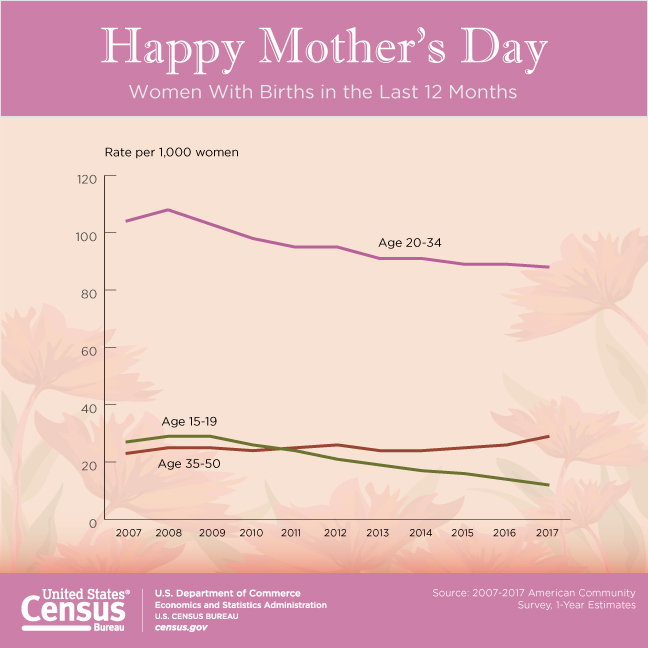Provide Health Care to Children and Families
We ask about the numbers of women with a recent birth in combination with other information, such as marital status, labor force status, household income, health insurance status, and poverty status, to help communities understand changes in the demand for health care. For example, communities, tribes, and the federal government use statistics on how many American Indian babies are born to estimate the demand for health care through the Indian Health Service.
Understand Changing Households
We ask about the characteristics of women who are giving birth, including where they live, to understand potential impacts on housing, public health, and pollution.
Though local vital statistics offices typically have a count of births per year, along with some characteristics of the parents, fertility data provide federal program planners, policymakers, and researchers a more complete picture of families. This is because we collect additional statistics about the age, education, and employment of parents in households welcoming children, and other important information about the homes (age, size, etc.) and households (poverty level, language spoken, and living arrangements, etc.).
State and local agencies use these statistics in combination with other information about new mothers, such as education and income, to understand future needs for the local education system and health services.
Infographic: Women with Births in the Last 12 Months

[Source: U.S. Census Bureau, 2007 to 2017 American Community Survey 1-Year]








